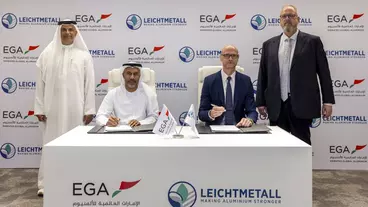Aluminium content in cars up 20% in the last three years

A new study estimates the average aluminium content of European produced cars to reach nearly 180 kg in 2019, meaning a 20% increase since 2016. The study from DuckerFrontier and commissioned by the European Aluminium industry association also forecasts the average aluminium content to further increase to almost 200 kg per vehicle by 2025. This is in line with the most positive scenario that was developed in 2016. The positive outlook and uninterrupted aluminium growth is largely attributed to aluminium’s role in lightweighting cars and as an enabler of electromobility.
The amount of aluminium used in cars is expected to see a significant increase by 2025, according to the third edition of the Aluminium Content in Cars study from DuckerFrontier. The study predicts that the aluminium content of cars produced in Europe will reach nearly 200 kg per vehicle by 2025, up from 179 kg today. This is in line with the most positive scenario developed by DuckerFrontier in 2016. The study also shows that electric and plug-in hybrid vehicles use significantly more aluminium than the average car.
Carmakers’ preference for aluminium is largely linked to its lightweight nature, making all cars more energy-efficient, no matter if it is a petrol, diesel or electrified vehicle. Due to its inherent strength and its excellent ability to absorb crash energy, well-engineered aluminium car parts can be made safer than steel but up to 50% lighter. Lighter cars substantially contribute to reducing CO2 emissions and improving fuel efficiency.
“Aluminium is a true enabler of electro-mobility. The combination of aluminium sheet, extrusions and castings bring perfect solutions for electric vehicles. Both as protection of the batteries and to reduce the weight of the vehicle to increase its performance or range,” said Dieter Höll, chairman of the Automotive & Transport Board at European Aluminium.
The study points to electrification as one of the main drivers for the future growth of the aluminium content in all product forms. Battery boxes, electric motor housings, but also body closures and body structures are highlighted as key applications for increased aluminium penetration in the future. Depending on the car segment, the average aluminium content per vehicle is forecasted to increase from at least 2.9 kg by 2025 in the A-segment and up to 38.0 kg in the D-segment.
The aluminium industry is closely collaborating with car manufacturers to drive lightweighting even further. Only during the last two decades, hundreds of new alloys have been developed to better answer to the demand of the vehicle manufacturers. Higher strength, better formability and improved energy absorption are a few of the areas the industry is focusing on. The aluminium industry is also investing in innovations that will help the transition to electro mobility. Charging stations, electric power cables and wind power plants are some of the products where aluminium is already playing an important role.
The study includes data from automotive OEMs and suppliers and European Aluminium member companies and has been developed by DuckerFrontier. It is based on a detailed analysis of the use of aluminium castings, extrusions, forgings, and sheets for 38 component groups and covering 95% of the EU28 car production in 2019.

Aluminium manufacturer Trimet has completed the expansion of its recycling plant in Gelsenkirchen and increased capacity by around 20%.

Emirates Global Aluminium (EGA) announces the aquisition of German aluminium recycling company Leichtmetall, strengthening its position in the recycling business.

Hydro invests in new Spanish aluminium recycler, thus strengthening its position in decarbonizing industries by offering more low-carbon aluminium.
